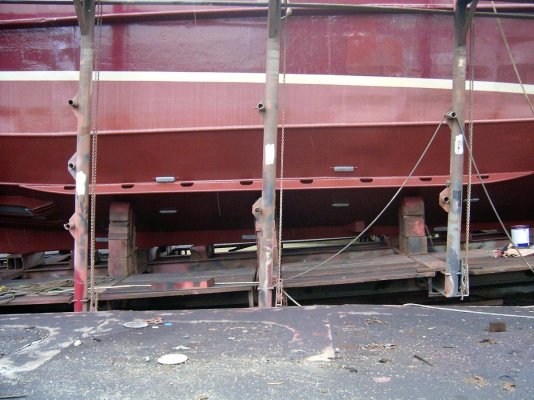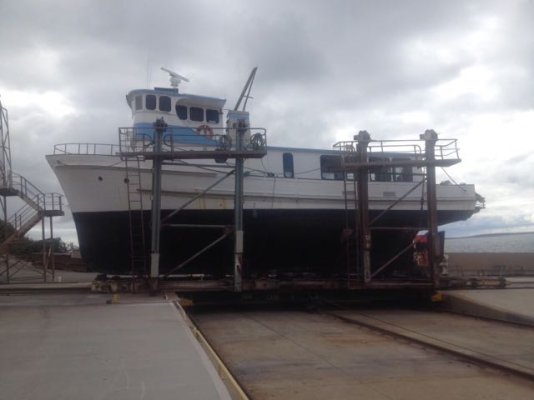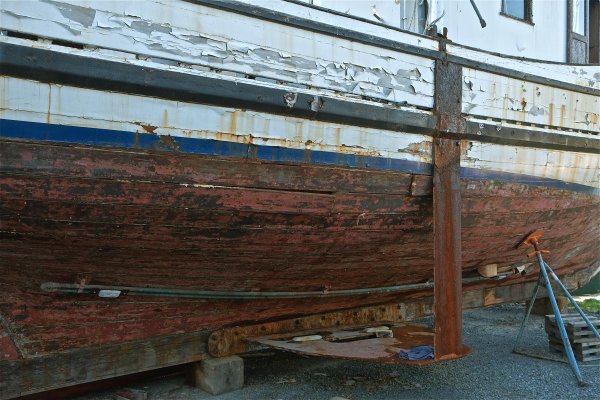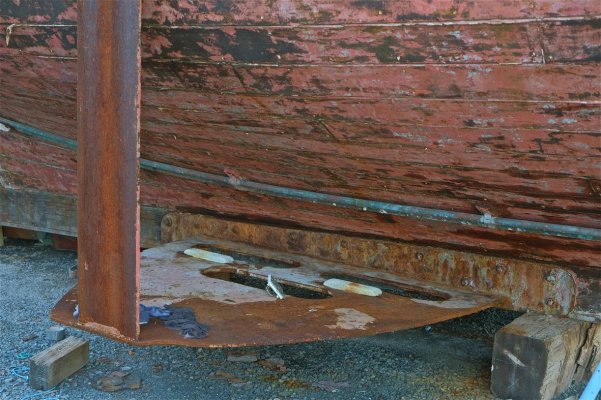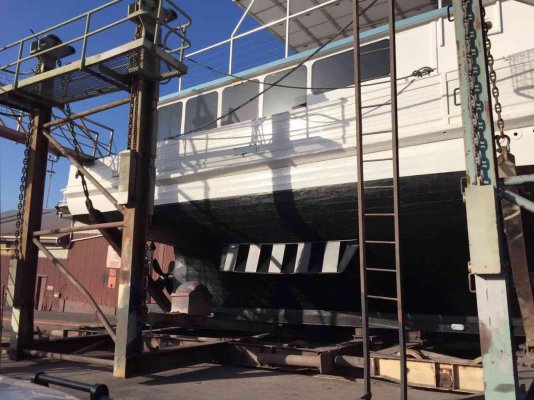Question for Nightsky
Guys , this is a most interesting thread as my little boat could do with some stabilization WHILE underway.
I have 'flopper stoppers' that are sensational while anchored ,so that is take care of.
Nightsky . I have continually heard rolling chocks and bilge keels mentioned in the same breath by many members. Please with respect, I know your a very knowledgeable guy, can you please clear-up this point of confusion.
What are rolling chocks and bilge keels in your opinion and are the different?
My take is:-
Flopper stoppers - hang off poles to reduce rolling while anchored NOT MOTORING.
Paravanes - hang off poles to reduce rolling while UNDERWAY
Rolling chocks - reduce rolling while UNDERWAY
Bilge keels - to sit the boat LEVEL ON THE SEABED when the tide goes out.
thx Brett[/QU0te
I am no expert, and I welcome being corrected by a naval architect, but the way I've always understood it, the terms rolling chocks and bilge keels have been used interchangeably (layperson will call them rolling chocks). The size and shape of the chocks (keels) is determined by their function. The chocks would be long and not stick out so far from the hull, whereas the bilge keel could extend to sit the boat level on the seabed, but I believe their attachment point on the hull would be close. My understanding has always been that paravanes, birds, stabilizers (flopper stopper) are all the same thing, just called different names based on region you live in. I have attached a photo of the chocks I had fitted to my commercial fish boat.


